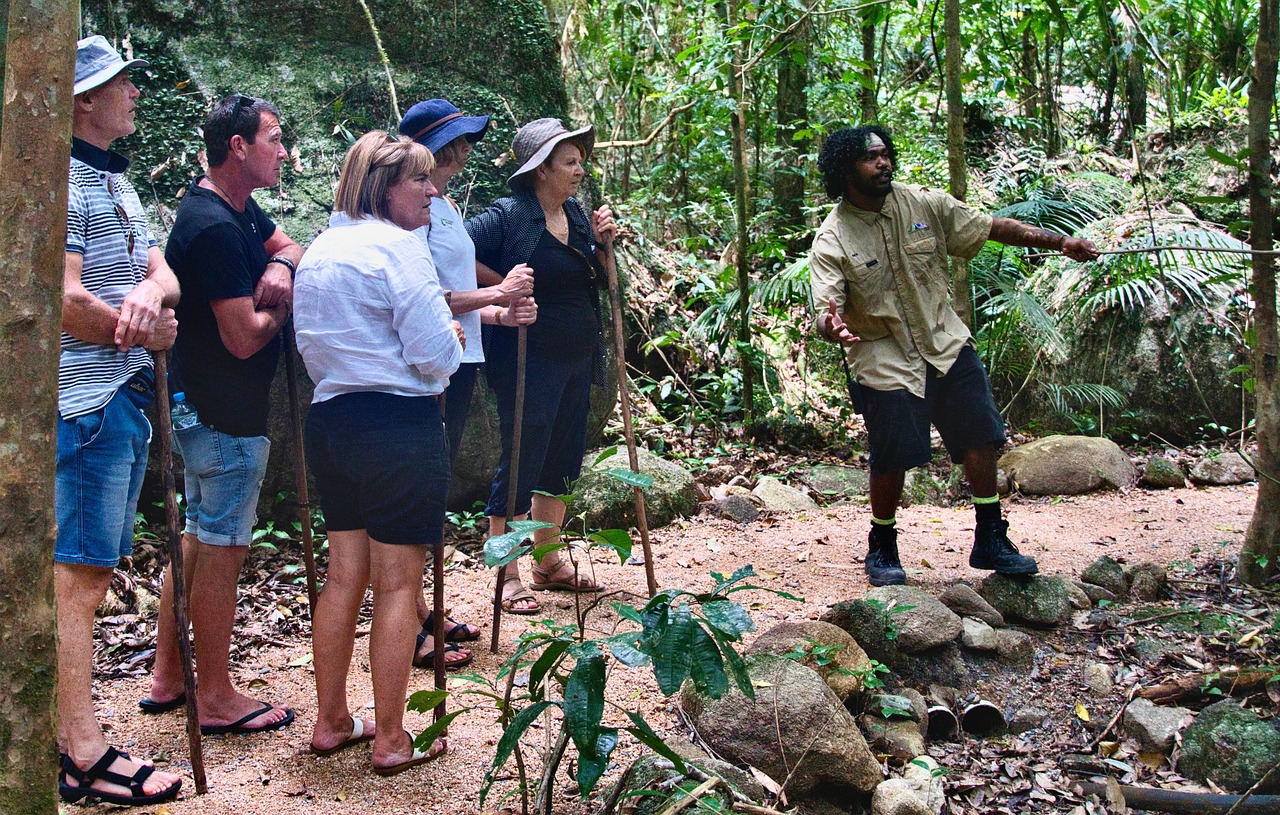Western hemlock trees thrive in well-drained, acidic soils with a pH between 4.5 and 6.0. They prefer a moist environment and should be planted in partial shade to full sunlight. Proper care includes regular watering, mulching, and monitoring for pests and diseases.
Understanding Western Hemlock Trees

Western hemlock (Tsuga heterophylla) is a coniferous evergreen native to the Pacific Northwest of North America. These trees are known for their graceful appearance, with drooping branches and soft, feathery needles. They can reach heights of up to 200 feet and live for several centuries, making them a significant part of their ecosystem.
In addition to their aesthetic value, western hemlocks play an essential role in forest ecology. They provide habitat for various wildlife species and contribute to the overall health of forest ecosystems. Planting these trees can enhance biodiversity and create beautiful landscapes, both in natural settings and cultivated gardens.
Soil Requirements
Choosing the right soil is crucial for the healthy growth of western hemlock trees. Below are key soil characteristics that promote optimal growth:
| Soil Type | Characteristics |
|---|---|
| Drainage | Well-drained soil is essential to prevent root rot. |
| pH Level | Acidic soil with a pH of 4.5 to 6.0 is ideal. |
| Nutrient Content | Rich in organic matter to support healthy growth. |
| Moisture | Consistently moist but not waterlogged. |
To improve soil conditions, consider adding organic matter such as compost or well-rotted manure. This can enhance nutrient levels and improve soil structure. Testing the soil before planting can also provide valuable insights into its pH and nutrient content, allowing for necessary amendments.
Planting Location and Conditions
The location where you plant western hemlock trees is just as important as the soil type. They prefer areas that provide some shade, especially during the afternoon sun. Here are some considerations for selecting the right planting site:
- Sunlight: Partial shade to full sun is suitable for western hemlocks.
- Wind Protection: Plant in areas shielded from strong winds to avoid damage.
- Space: Allow adequate space for the trees to grow, as they can reach significant heights.
When planting multiple trees, ensure they are spaced at least 20-30 feet apart. This spacing allows for optimal air circulation and prevents competition for nutrients and water among the trees.
Watering and Care
Proper watering is vital for establishing healthy western hemlocks. Newly planted trees require regular watering to help them establish roots. Here are some watering tips:
- Water deeply once or twice a week during dry spells.
- Avoid overwatering, which can lead to root rot.
- Mulch around the base to retain moisture and suppress weeds.
Monitor your trees for signs of pests or diseases, such as needle discoloration or wilting. Early detection and intervention can prevent more significant issues down the road.
Pest and Disease Management
Western hemlock trees, like any plant, are susceptible to various pests and diseases that can affect their health and longevity. Understanding these threats is crucial for maintaining healthy trees. Here are some common issues to monitor:
- Hemlock Woolly Adelgid: This tiny insect feeds on tree sap, leading to needle loss and dieback. Infestations may require treatment with horticultural oils or insecticides.
- Root Rot: Caused by overwatering or poorly drained soil, root rot can severely damage or kill trees. Ensure adequate drainage and avoid overwatering.
- Needle Blight: Fungal infections can cause needles to turn yellow or brown. Maintaining good air circulation and removing infected foliage can help manage this issue.
- Spider Mites: These pests thrive in hot, dry conditions and can cause leaf discoloration. Regular misting can help deter them.
Fertilization Practices
Fertilization is an essential aspect of western hemlock care. Properly balanced nutrients will support robust growth and overall health. Here are some guidelines for fertilizing your trees:
- Soil Testing: Conduct a soil test to determine nutrient levels. This will help you choose the right fertilizer and application rate.
- Type of Fertilizer: Use a slow-release, balanced fertilizer formulated for evergreen trees. A ratio such as 10-10-10 or 14-14-14 is often effective.
- Application Timing: Apply fertilizer in early spring before new growth begins. This timing allows the nutrients to be readily available as the tree starts its growing season.
- Application Method: Spread the fertilizer evenly around the base of the tree, avoiding contact with the trunk. Water thoroughly after application to help nutrients penetrate the soil.
Pruning Techniques
Pruning is another vital aspect of maintaining healthy western hemlocks. Proper pruning encourages strong growth and helps prevent disease. Here are some key tips for effective pruning:
- Timing: The best time to prune is late winter to early spring, just before new growth begins.
- Remove Dead or Damaged Branches: Regularly inspect your trees for any dead, damaged, or diseased branches and remove them promptly to improve overall health.
- Avoid Topping: Do not cut back large sections of the tree indiscriminately. This can lead to weak growth and increased susceptibility to pests and diseases.
- Maintain Natural Shape: Aim to preserve the natural shape of the tree while removing any branches that cross or rub against each other.
Mulching Benefits
Applying mulch around the base of western hemlock trees offers several benefits that contribute to their health and vitality. Here are some advantages of mulching:
- Moisture Retention: Mulch helps retain soil moisture, reducing the need for frequent watering.
- Weed Suppression: A layer of mulch can prevent weeds from competing with your hemlocks for nutrients and water.
- Temperature Regulation: Mulch insulates the soil, protecting roots from extreme temperature fluctuations.
- Nutrient Addition: Organic mulches, such as shredded bark or wood chips, decompose over time, adding valuable nutrients back into the soil.
Select a mulch material that is appropriate for your environment. Apply a layer about 2-4 inches thick around the base of the tree, ensuring it does not touch the trunk. This practice will promote a healthier growing environment for your western hemlocks.
Seasonal Care Tips

Caring for western hemlocks throughout the seasons ensures their continued health and growth. Here are some seasonal care tips:
- Spring: Fertilize your trees as new growth begins and prune any dead or damaged branches.
- Summer: Monitor for pests and ensure adequate watering during dry spells.
- Fall: Rake up fallen needles and debris to reduce disease risk, and apply mulch as needed.
- winter: Protect young trees from heavy snow accumulation and ice damage by gently shaking off excess snow from branches.
By following these seasonal care tips, you can help ensure your western hemlock trees thrive year-round, contributing beauty and ecological benefits to your landscape.

Choosing the Right Varieties of Western Hemlock
While the western hemlock is a single species, there are variations within it that can be beneficial depending on your specific planting conditions and landscape goals. Understanding the differences can help you make an informed decision when selecting trees for your garden or forested area.
- Tsuga heterophylla: This is the standard western hemlock, known for its towering height and graceful drooping branches. It is well-suited for shaded areas and moist soils.
- Tsuga heterophylla ‘Jeddeloh’: A dwarf variety that grows to about 3-4 feet tall. It’s perfect for smaller gardens or as a focal point in landscape designs.
- Tsuga heterophylla ‘Aurea’: This variant has golden-yellow foliage, providing a striking contrast to other green plants. It’s ideal for adding visual interest to your garden.
When choosing a variety, consider factors such as the space available, soil conditions, and the overall aesthetic you want to achieve. Consulting with local nurseries can also provide insights into which varieties perform best in your region.
Companion Planting with Western Hemlock
Companion planting involves selecting plants that benefit each other’s growth, and western hemlock trees can be paired with various species to enhance their health and beauty. Here are some suitable companions:
- Ferns: Ferns thrive in the shade of hemlock trees, creating a lush underlayer that retains moisture and adds texture.
- Wildflowers: Native wildflowers like trillium and violets can grow well in the dappled sunlight beneath hemlocks, attracting pollinators.
- Native Shrubs: Plants such as salmonberry or huckleberry can coexist well with hemlocks, providing shelter and food for local wildlife.
- Other Conifers: Pairing hemlocks with other coniferous trees can create a diverse habitat while ensuring all species receive adequate light and nutrients.
When selecting companion plants, always consider their water and nutrient needs. This will help ensure that the plants support each other rather than compete for resources.
Environmental Considerations
Western hemlocks are sensitive to environmental changes. It’s essential to consider how local conditions may impact their growth. Here are some environmental factors to keep in mind:
- Climate: Western hemlocks prefer cooler climates with ample rainfall. They may struggle in areas with prolonged drought or extreme heat.
- Soil Erosion: The presence of hemlocks helps prevent soil erosion due to their extensive root systems. However, planting them on slopes or unstable ground requires care to ensure they establish correctly.
- Biodiversity: Planting western hemlocks contributes to local biodiversity. They provide habitat for various species, including birds, mammals, and insects.
Understanding these environmental considerations can guide you in creating a planting strategy that enhances the growth potential of your western hemlocks while benefiting the surrounding ecosystem.
Common Uses of Western Hemlock Trees

Western hemlock trees are not just beautiful; they serve several practical purposes. Here are some common uses:
- Lumber: The wood of western hemlock is valued for its strength and durability. It is commonly used in construction, cabinetry, and furniture making.
- Landscaping: These trees are often utilized in landscaping for their aesthetic appeal. They can be used as shade trees or as part of mixed plantings.
- Erosion Control: The deep root system of western hemlocks helps stabilize soil, making them an excellent choice for preventing erosion on slopes or riverbanks.
- Wildlife Habitat: They provide essential shelter and food for various wildlife species, making them important for maintaining healthy ecosystems.
The versatility of western hemlock trees makes them an excellent choice for various applications, contributing both beauty and functionality to gardens and landscapes.
Caring for Young Hemlocks
Younger western hemlocks require special attention during their early years to ensure healthy growth. Here are some care tips specifically for young trees:
- Watering: Young trees need consistent moisture. Water regularly during dry spells, particularly in the first few years after planting.
- Mulching: Apply mulch around the base to retain moisture and suppress weeds, which can compete with young trees for nutrients.
- Pest Monitoring: Keep a close eye on young trees for signs of pests or diseases, as they are more vulnerable than mature trees.
- Protection: Consider using tree guards or wraps to protect young trunks from damage by animals or harsh weather conditions.
Caring for young western hemlocks sets the foundation for strong, healthy trees that will thrive for generations to come.
Additional Resources for Western Hemlock Care
For those looking to deepen their understanding of western hemlock trees and their care, numerous resources are available. Here are some useful avenues to explore:
- Extension Services: Many universities offer extension services with valuable information on tree care, including specific guidelines for hemlocks.
- Gardening Books: Look for books that focus on conifer care or native plants in your region. These can provide insights into best practices and regional considerations.
- Online Forums and Communities: Engaging with online gardening communities can help you connect with other hemlock enthusiasts who share tips and experiences.
- Local Nurseries: Your local nursery can be a treasure trove of information. They often have staff knowledgeable about the best practices for planting and caring for hemlocks in your area.
Utilizing these resources can enhance your knowledge and empower you to provide the best care for your western hemlocks.
Common Mistakes to Avoid
When planting and caring for western hemlocks, certain common mistakes can hinder their growth and health. Awareness of these pitfalls can guide you in the right direction:
- Overwatering: Many gardeners mistakenly believe that more water is better. Overwatering can lead to root rot, so it’s essential to balance moisture levels.
- Poor Site Selection: Choosing a location without adequate sunlight or drainage can negatively impact tree growth. Always assess the site before planting.
- Ignoring Soil Quality: Failing to test soil pH and nutrient levels may result in inadequate care. Test soil prior to planting and amend it as needed.
- Neglecting Pruning: Some gardeners avoid pruning altogether. Regular pruning is necessary to maintain the health and shape of your hemlocks.
Avoiding these common mistakes will set a solid foundation for healthy, thriving western hemlocks in your landscape.
Final Thoughts
Planting and caring for western hemlock trees can be a rewarding endeavor, both for their beauty and ecological benefits. With the right knowledge and practices, these majestic evergreens can thrive in various environments, enhancing landscapes and providing habitat for wildlife.
The key to successful growth lies in understanding their specific needs regarding soil, water, light, and pest management. By implementing proper care strategies, selecting suitable varieties, and avoiding common mistakes, you can cultivate robust hemlock trees that will flourish for generations.
Whether you are looking to enhance your garden with these graceful trees or restore natural habitats, western hemlocks play an integral role in maintaining biodiversity. Engage with local resources, connect with fellow gardeners, and enjoy the process of nurturing these beautiful trees. Your efforts will not only contribute to a greener environment but also create lasting beauty in your landscape.
